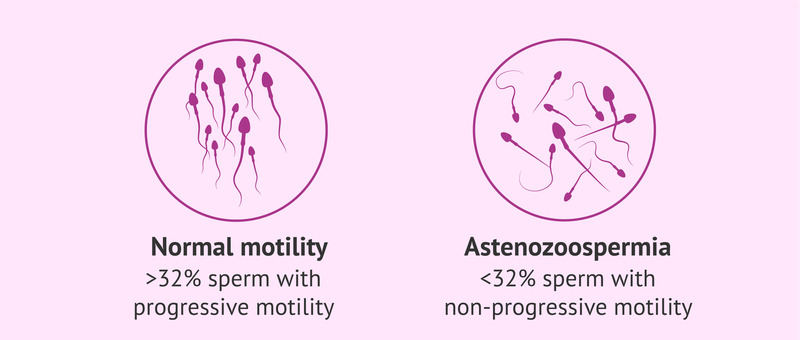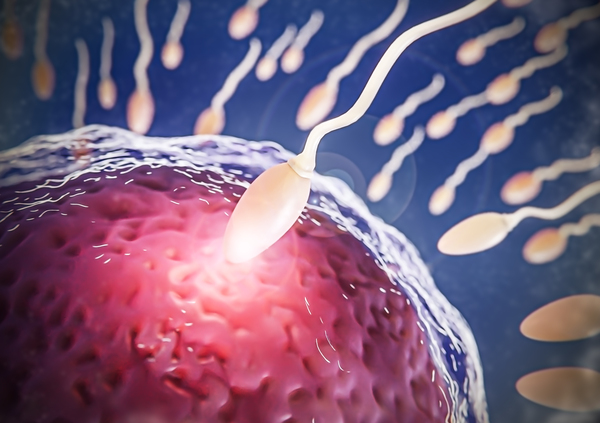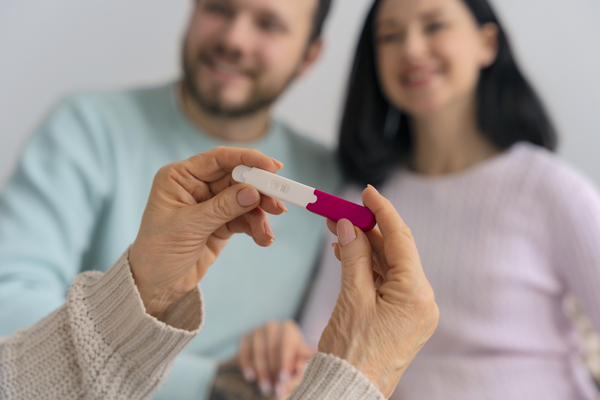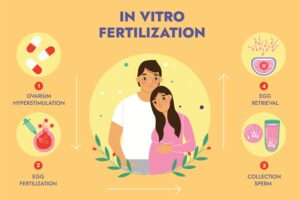When sperm can’t swim well to reach the egg or when men face low sperm motility – the medical condition is called asthenozoospermia. In an ideal medical situation, 32% of sperm should move well, and a total of 40% of sperms of any male should be in motion. But in asthenozoospermia, this doesn’t happen. It’s a common issue in men who struggle with infertility, with studies showing it affects a significant number, anywhere from 18.7% to 63.13%. In simple words the women find it tough getting pregnant with low sperm motility in their partner.
Is it possible to get pregnant with asthenozoospermia? Well, we would say that it is quite tough. Why? We are sharing the detailed reasons below…
Asthenozoospermia – How Does it Affect Male Fertility?

1. Difficult Journey to the Egg:
To fertilize the egg, sperms need to swim in a healthy manner to reach the egg. If the sperms move slowly or in the wrong direction, how will they fertilize the egg? It is as simple as an arrow going in the wrong direction and missing the target which is the EGG!
2. Trouble Fertilizing the Egg:
Suppose the sperm manages to reach the egg, it needs to be healthy to penetrate its protective layer to fertilize it. What if the sperm is weak and unable to do it? This again is reducing the chances of fertilisation.
3. Poor Quality Sperm:
Weak or low sperm motility often means the sperms may have other issues like abnormal shape or size. This could either not help fertilising the egg or even cause genetic issues in your child.
4. Higher Infertility Chances:
As per medical experts, if you do not get asthenozoospermia treatment done, it can further increase your infertility as a couple. Thus, we always suggest nipping the problem in the bud!
The Key Factors Causing Asthenozoospermia:
Asthenozoospermia, or low sperm motility, can be caused by the following main factors…
1. Genetic Asthenozoospermia:
Some individuals may inherit genetic conditions that can cause low sperm motility. In simple words, your parents’ genes created the issues. And these genetic issues may hinder the development and functioning of sperm. So, your wife is not getting pregnant.
2. Lifestyle Factors that Cause Asthenozoospermia:

Your bad habits like being a chain smoker; drinking a lot of alcohol, or taking drugs, can also cause asthenozoospermia. Also, being overweight (due to an unhealthy diet) and not exercising daily can also be one of the causes of low motility in sperm
3. Environmental Factors Contributing to Asthenozoospermia:
Things like high pollution with toxins in the environment, certain kinds of high radiation, and even excessive heat – can cause low sperm motility.
4. Asthenozoospermia due to Medical Conditions:
- There could be four different medical conditions that a male can face:
- Hormonal imbalances
- Infections in the reproductive system
- Any detected or undetected injury to your husband’s testicles
- Then there is also a medical condition called Varicocele which causes swollen veins in the sperm sac that can cause low sperm motility.
- Finally, some autoimmune disorders also hinder sperm production and movement.
Symptoms and Diagnosis of Asthenozoospermia:
To find the asthenozoospermia treatment, we need to first know the symptoms towards causes of low motility in sperm. So let’s discuss this further.

A) Symptoms of Asthenozoospermia can vary from person to person. But one common symptom would always be not getting pregnant due to low sperm motility. Other signs may include low sperm count and abnormal sperm shape. But these signs also can be detected medically, only if you face infertility issues as a couple.
B) Diagnosing Asthenozoospermia involves various tests to assess sperm health:
— First test for asthenozoospermia treatment is the semen analysis to evaluate sperm count, motility, and morphology.
— Further blood tests will help you know if the two of your also have any hormonal imbalances or any other underlying medical conditions that is causing low sperm motility
— Thirdly, your doctor will also ask you about your lifestyle habits, in what kind of environment you live or work in; What is your own and parents’ medical history, etc.
All this will help in early detection and diagnosis of asthenozoospermia. And this will help you in quicker asthenozoospermia treatment.
Treatment for Asthenozoospermia – Available Options:
When you ask us, is it possible to get pregnant with asthenozoospermia? We would say YES! How? We are sharing the Treatment options as below, because not one treatment fits all, and your body might need a combination of the following:
1. You need Lifestyle changes:
In straight words, quit smoking, cut back on alcohol and start eating healthy. Also exercise daily even if for half to one hour. Not just your sperm but your whole body will get fitter and stronger, increasing the chances of having a child.
2. Next Step is Medical interventions:

If simple lifestyle changes don’t help then you might be needing medicines or treatments to fix any problems that are making the sperm slow. You might need medication for hormonal imbalances or to fight if any infections are there.
3. Assisted reproductive techniques (ART):
In modern age after the above are ruled out or fixed, and still if you face issues in having a child, then we suggest either of these treatments, depending on what your body will adapt to faster. So either we will suggest going for the option of putting sperm directly into the womb (IUI) or combining eggs and sperm in a lab (IVF) to help make a baby. If the sperms aren’t moving well enough on their own, these two combined with a good lifestyle work the fastest and best.
4. Surgical Options as asthenozoospermia Treatment:
Certain surgeries can fix physical problems that make the sperm slow. Option two is the surgical removal of sperm and enhancing the chances of your wife getting pregnant. In simple words, when sperm don’t move correctly, it’s better to implant them directly where the egg is.
Dealing Infertility Stress?
It is important to speak to your doctor. They can help you in two different ways:

1. Handling Emotional Health:
Stress is a big factor, it can anyway reduce your general chances of getting pregnant also. So when medical experts step in they help you handle the situation emotionally and empathetically.
2. Physical Tailored Solution:
Remember, that the solution which your friend may have used, may not work on you, because two human bodies are different. So when medical experts step in, they make you undergo tests and reach out to the root cause and offer treatments to find a quick solution towards starting a family.
How Can Understanding Asthenozoospermia Lead to Improved Fertility Solutions?
If you’re facing challenges in getting pregnant due to low sperm motility, then don’t think twice, go for medical advice immediately. Infertility experts are not there to scare you, but to help you get a customized asthenozoospermia Treatment. The expertise and support offered by the best IVF centers can be invaluable in achieving the dream of parenthood. In short they get you a solution tailored to your specific situation. Don’t hesitate to reach out for assistance. Medical advice is the first step towards understanding and addressing asthenozoospermia. Because it will ultimately help you in achieving your dream of starting a family.
FAQs:
Asthenozoospermia is a condition characterized by reduced sperm motility, impacting fertility.
Causes include genetic factors, hormonal imbalances, infections, lifestyle choices, and environmental factors.
Common symptoms include difficulty conceiving, low sperm count, and poor sperm motility observed in semen analysis.
Diagnosis typically involves a comprehensive semen analysis to assess sperm motility and other parameters.
Treatments may include lifestyle changes, hormone therapy, or assisted reproductive techniques like intrauterine insemination (IUI) or in vitro fertilization (IVF).




